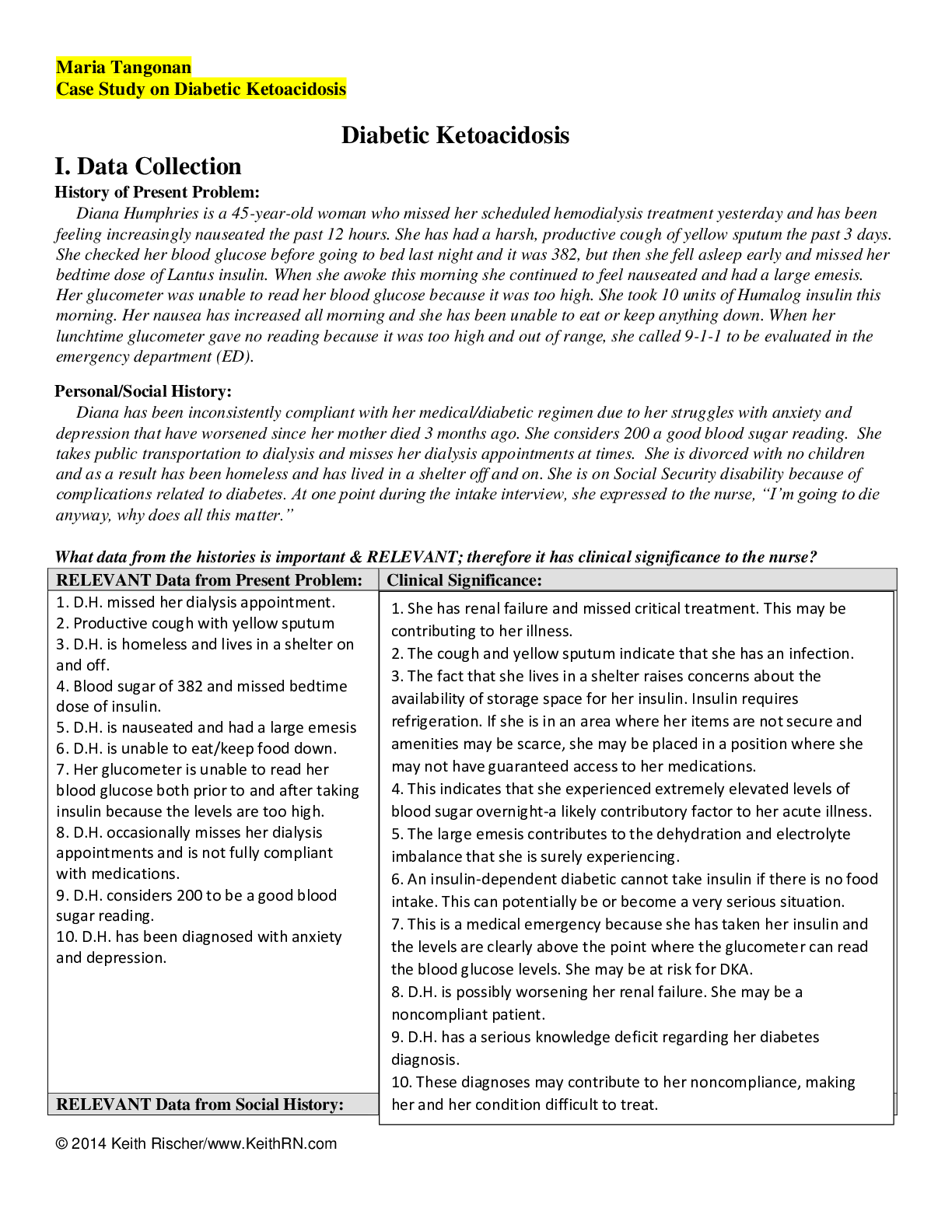*NURSING > CASE STUDY > (GRADED) NR-511 Week 3 Discussion: Clinical Case Study Part Two Discussion (Initial Post, Responses) (All)
(GRADED) NR-511 Week 3 Discussion: Clinical Case Study Part Two Discussion (Initial Post, Responses)
Document Content and Description Below
In Part 2 you will be given some additional history, exam and/or test findings. Using this information and the information in Part 1, answer the following questions: 1. What is your primary (one... ) diagnosis for this patient at this time? (support the decision for your diagnosis with pertinent positives and negatives from the case). Tell the reader how you came to this conclusion … the information that you were given (i.e., CXR result, lab result). Interpret the results into your diagnosis decision (i.e., tell how this information … you to narrow your differential to the one diagnosis that you chose). Example: Diagnosis: Pharyngitis, streptococcal Rationale: The CBC results are normal which rules out infection and anemia. The RSA test was + which tells me that she has a very strong likelihood of streptococcal pharyngitis. Pertinent Positives and Negatives: list all of the supporting history & physical findings from Part 1 & 2 to support your diagnosis. In the case where a diagnosis was made … on clinical presentation and history, explain the criteria with an EBM argument to support. 2. Identify the corresponding ICD-10 Code. You can find a link to an ICD-10 code finder by going to the Library homepage>Browse guides>Course directory tab>select NR511 from the drop down box>select Go. Otherwise, a google search will provide you with several free options you can use Example: J02.0 3. Provide a treatment plan for this patient’s primary diagnosis which includes: If part of the plan does not warrant an action, you must explain why. ALL medication and testing decisions (or decisions not to treat with medication or additional testing) MUST … with an EBM argument as you did in Part 1. • Medication All prescriptions and OTC medications should be written in RX format AND include an EBM argument to support why this medication is the most appropriate: • Any additional testing necessary for this particular diagnosis This is typically done when you need more information to confirm a diagnosis or differentiate the diagnosis. This is not where you list any tests that were already done and … to you in the case. You need to be decisive and tell me what you are going to do for this patient, right here in your office, today. Don’t list all of the possibilities that are available or could … done down the road. I want to assess your diagnostic reasoning skills and ability to make a decision in the moment. • Patient education This is pretty self-explanatory. You do need to provide references. • Referral Also self-explanatory. Provide references. Example: Penicillin VK 500mg, Disp #20, Sig: 1 tab twice daily x 10days; RF: 0 Rationale: Penicillin is the 1st line treatment recommendation for Group A Beta- hemolytic streptococcal pharyngitis, … on their narrow spectrum of activity, infrequency of adverse reactions, and modest cost. (Shulman, Bisno, Clegg, Gerber, Kaplan, Lee, Martin, & Van Beneden, 2012). My patient has no … allergies, so PCN VK is appropriate. No additional testing will … today (Reference, date). Rationale: Point of care, rapid strep antigen tests are highly specific (approximately 95%) when … with throat cultures, so false-positive test results are highly unusual. Consequently, a therapeutic decision can be confidently made … on the positive result which was … for this patient in the scenario (Shulman, Bisno, Clegg, Gerber, Kaplan, Lee, Martin, & Van Beneden, 2012). Patient instructions: -take all medication as … (Reference, date).-Etc… No referral is necessary at this time (Reference, date). 4. Provide an active problem list for this patient … on the information given in the case. This is where you list all of the known medical problems of the patient. This is different than a differential. Example: Hypertension-poorly … Obesity 5. Are there any … that you would also make to the patient’s overall treatment plan at this time? Must provide and EBM argument for each treatment or testing decision. Other than what you have … above in your plan for the primary diagnosis, this is where you address anything else regarding the patient’s care that you feel is necessary. Let’s say that our patient has a history of HTN and she is currently taking Lisinopril 5mg daily. Let’s also say that at today’s visit, her BP is 170/95. Example: Given that the patient has suboptimal control of her HTN, I also would like to increase her Lisinopril to 10mg daily. (Given EBM argument for your choice). 6. Provide an appropriate F/U plan Example: F/U in 10-14 days if symptoms are not … or sooner if they become worse, etc., (Reference, date). Otherwise, If her symptoms have … she should return to the clinic in 1 month to reevaluate her blood pressure after the medication change. List your references that were … above according to APA rules. Format is not … (Canvas does a poor job in formatting the tabs and spaces) BUT all other APA elements are required. [Show More]
Last updated: 2 years ago
Preview 1 out of 4 pages
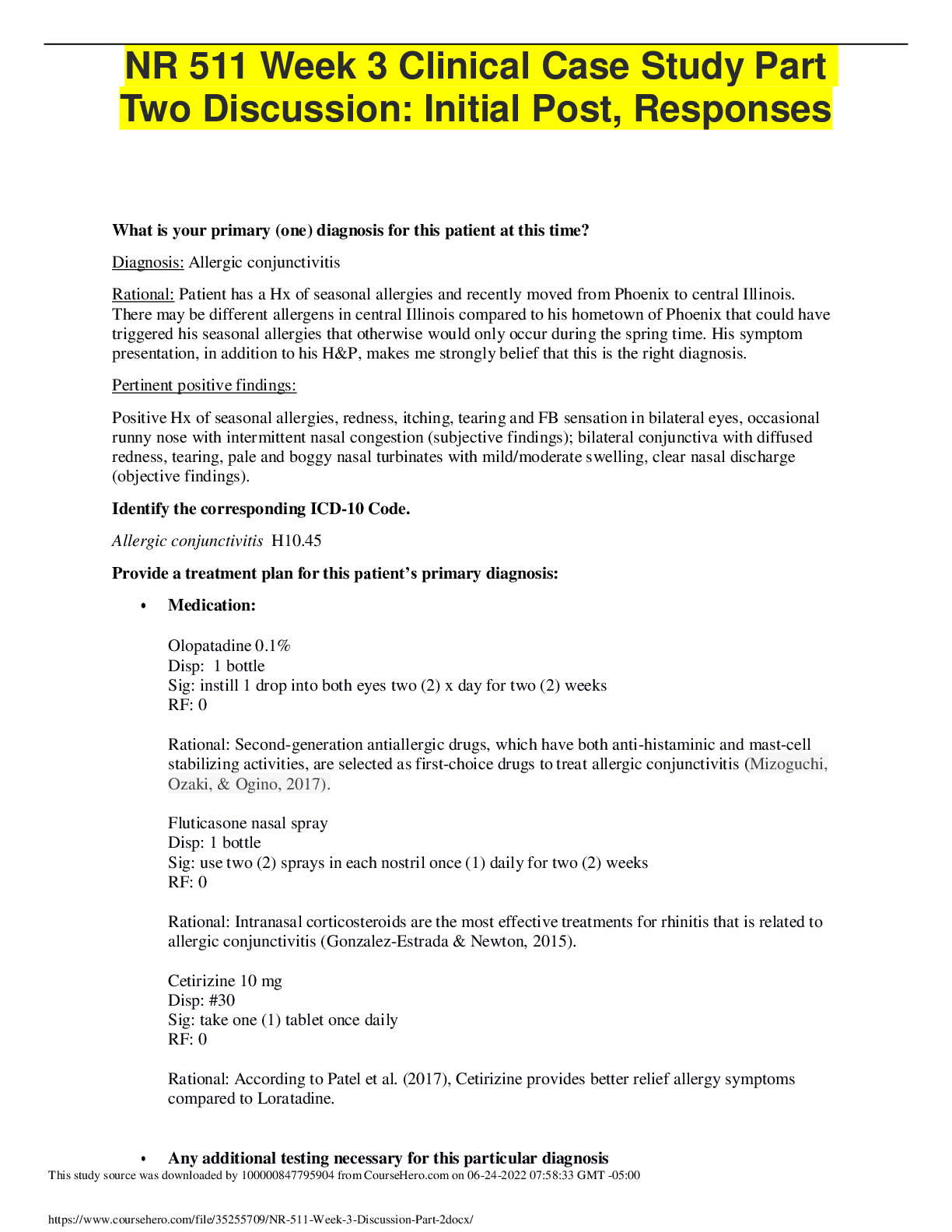
Buy this document to get the full access instantly
Instant Download Access after purchase
Buy NowInstant download
We Accept:

Reviews( 0 )
$11.00
Can't find what you want? Try our AI powered Search
Document information
Connected school, study & course
About the document
Uploaded On
Jun 24, 2022
Number of pages
4
Written in
Additional information
This document has been written for:
Uploaded
Jun 24, 2022
Downloads
0
Views
73






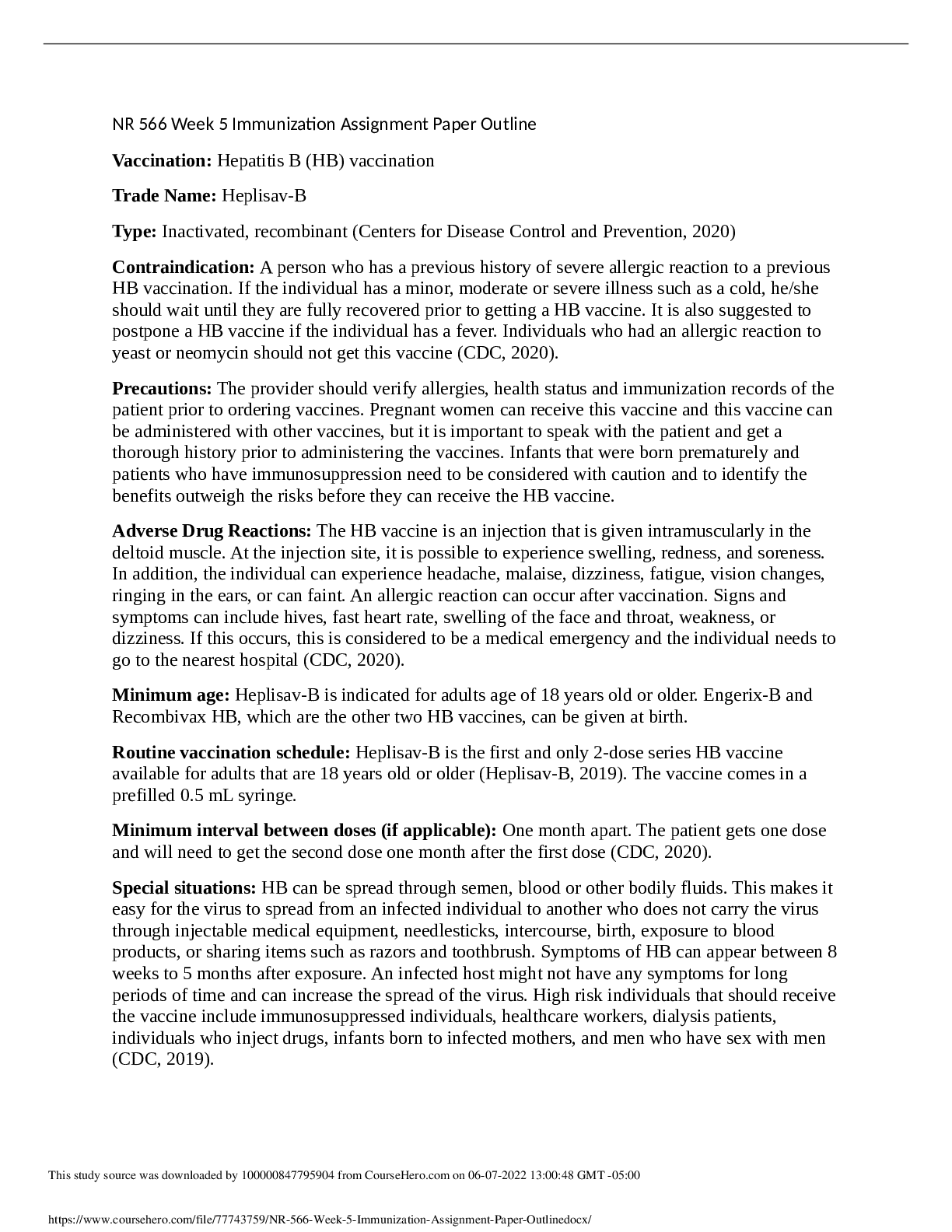
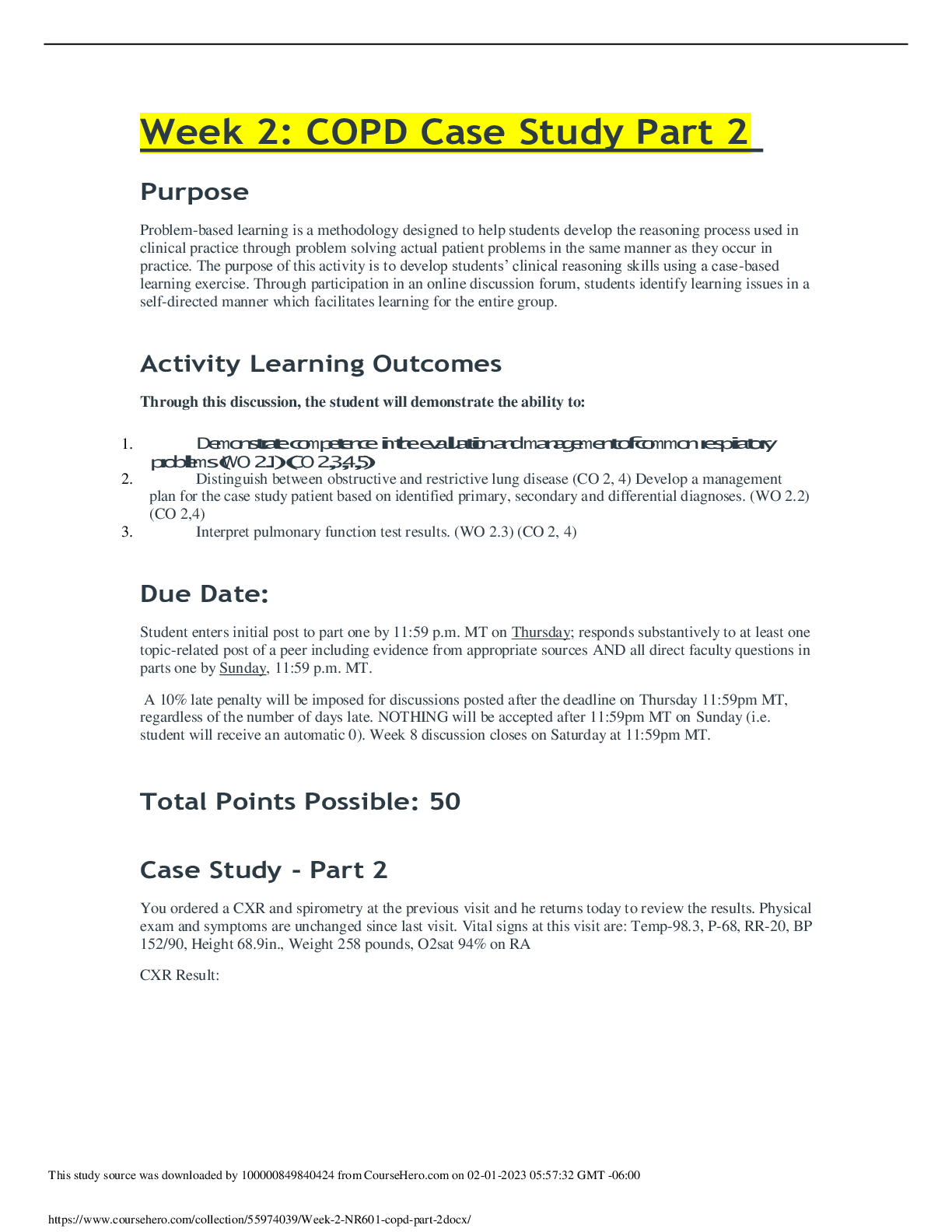


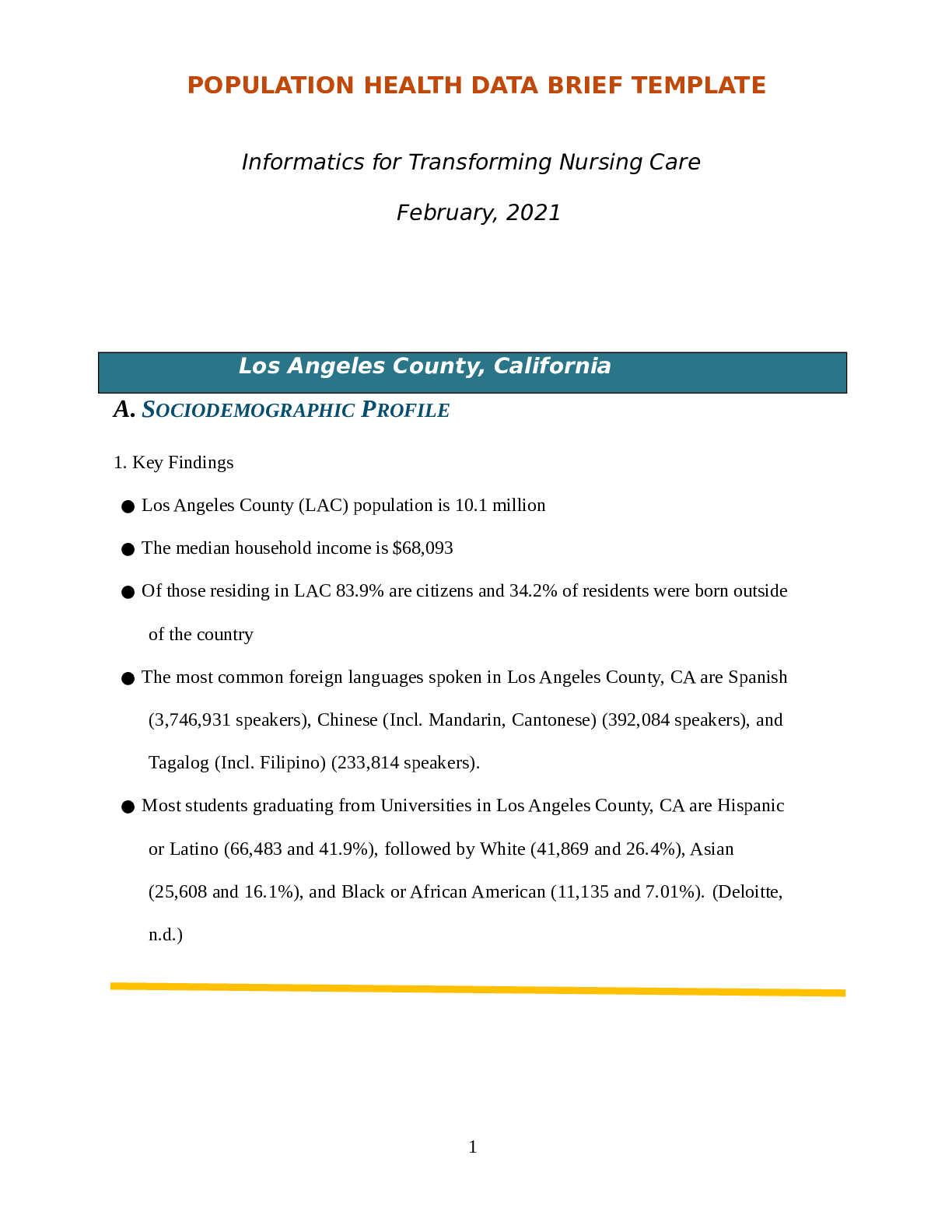


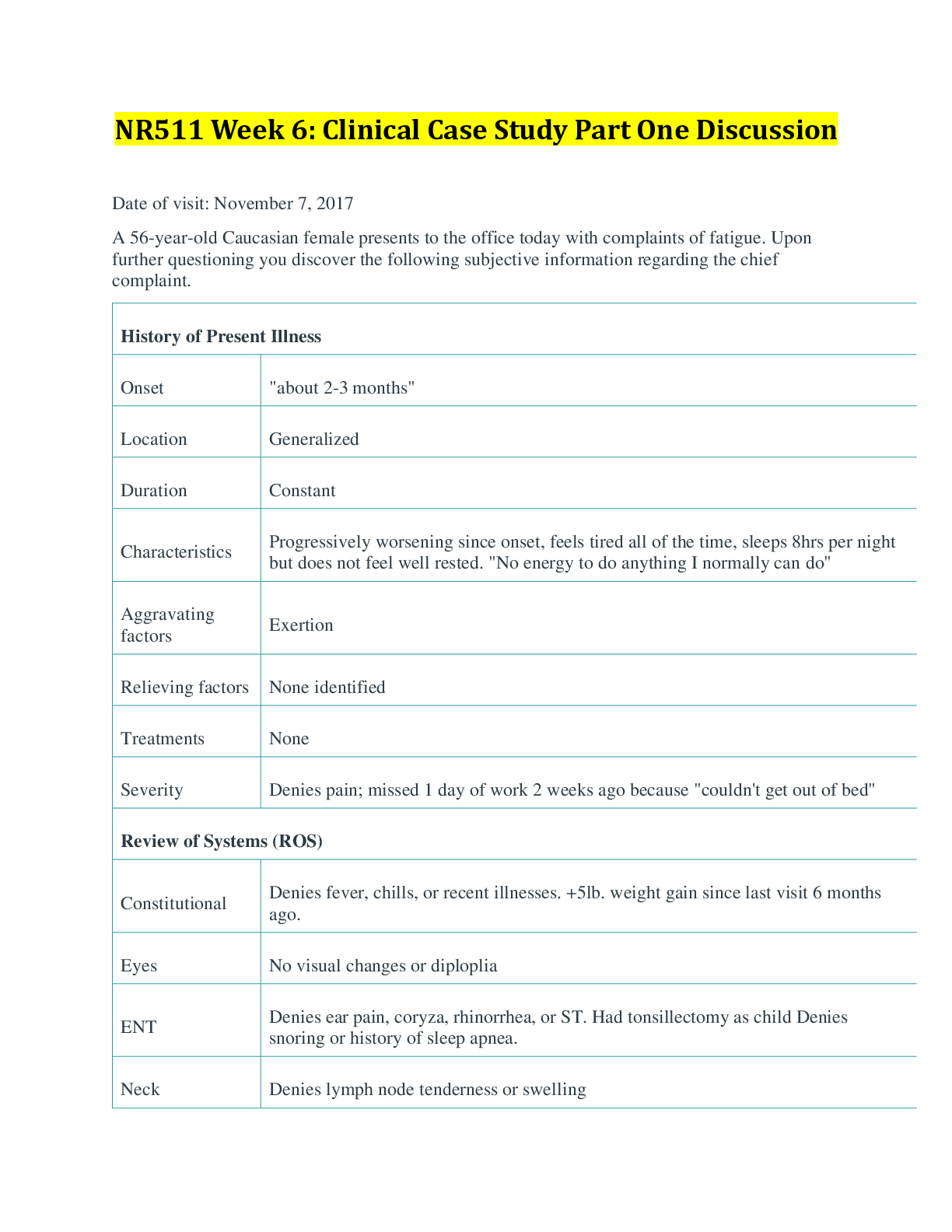
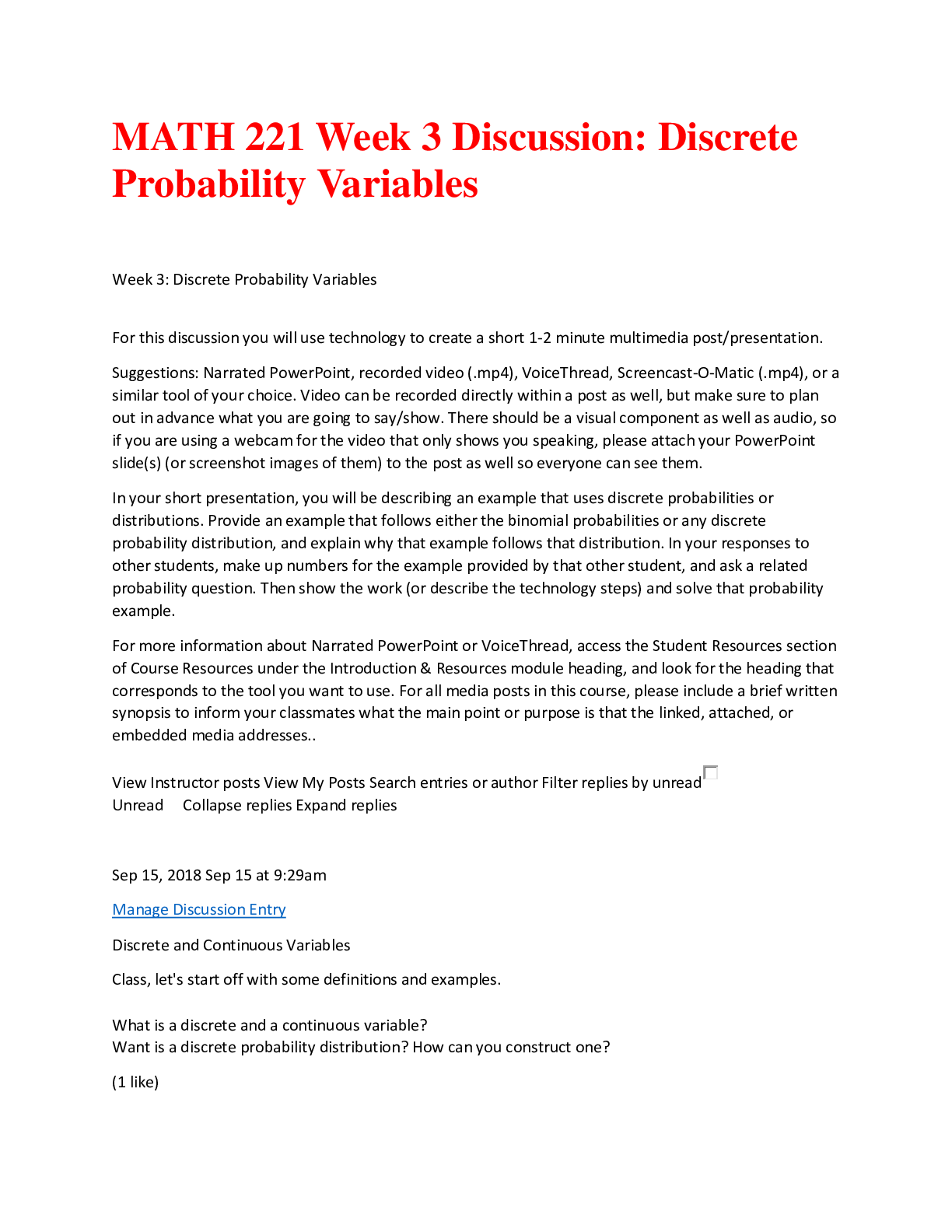




.png)


